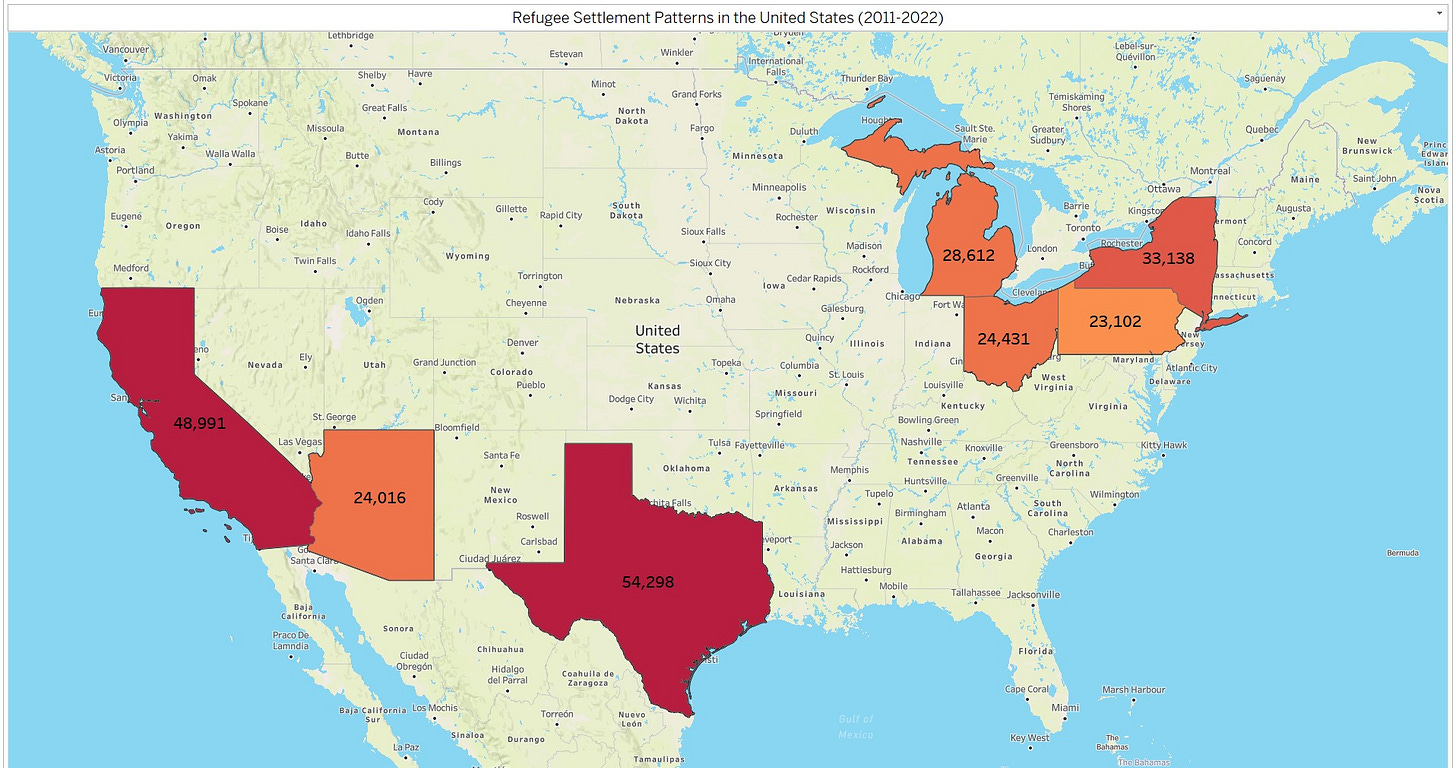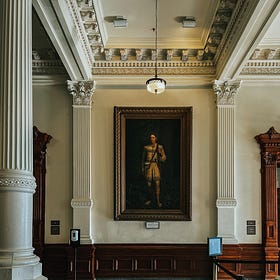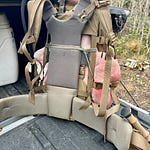
Our last three articles/podcasts established conditions allowing for the legal and orderly movement of goods and people across the border.
In devising legal conditions supporting these activities, we created unambiguous indications that other movements across the border are illegal.
We need to stop the illegal movement of goods and people across the border. When there are legal options to move goods and people, there’s a high likelihood that other movements are illegal. These illegal movements are human traffickers, weapons smugglers, and drug runners.
How would we address these illegal movements?
Over the last month, we’ve considered effective and humane strategies to solidify our borders against illegal entry.
First, we looked at the history of naturalization and immigration and national immigration policy.
We have a long history of attempting to navigate the complex issue of immigration and border security. President Washington signed a law guiding naturalization and immigration, and we are still dealing with the issue today.
Over time, the nation’s immigration policies have trended towards the equal treatment of all attempting to immigrate. The US has not opened its borders to all, but immigration has changed from a skin color-based system to a system intended to attract skilled labor.
There’s another trend in the history. No Congress or President has supported open borders.
We are against open borders because undocumented immigration leads to abuse of immigrants and strains community resources, including healthcare, education, and law enforcement. What can we do about it?
We considered our first option to address our southern border: sending the US military to act against smugglers and illegal immigrants. That option wasn’t tenable for legal and practical reasons. You can catch up here:
Security at the Southern Border - History and Sending the Military to the Border
What are the most effective and humane strategies to solidify our borders against illegal entry?
Next, we needed more context. We considered the difference between an immigrant and a refugee and why the difference is significant. Immigrants choose to relocate to another country. Refugees flee their home country due to persecution, war, or violence. The immigrant and refugee differences present a multifaceted issue. While we have illegal immigration, much of the border crisis involves refugees.
On the one hand, we need robust border security to manage unlawful entry. On the other, the US ratified a refugee treaty, committing to protecting and providing assistance to those who qualify as refugees under international law.
And we need to take some of the refugee burden off our US border states.

The map clearly shows this issue isn’t a blue-state or red-state issue. It’s a geography issue.
To achieve our multifaceted goal of managing the refugee situation at the border, we need to increase the Department of Homeland Security’s capacity to manage the refugee situation at the southern border. We need to augment this capacity to take some of the burden off US border states. By leveraging the Department of Defense’s support of civil authorities role, we can improve medical assistance, logistical support, and disaster relief on the border.
Further, we can support our border states by distributing refugees more equitably nationwide.
If you missed it, here’s a link:
Security at the Southern Border - Immigrants and Refugees
There’s some additional context we didn’t address last week. What’s the difference between an immigrant and a refugee, and why is the difference significant?
Third, we considered approaches we could use to address the underlying reasons for the refugee movement to the southern border. No matter the effort we make to enhance security measures at the US southern border, if we don’t stop the flow of refugees to the border, we will continue to have security challenges.
We must intervene with partnerships, building cooperative relationships with regional countries to address challenges jointly. We must develop and implement solutions that address economic challenges, reduce violence, and support political stability to achieve progress. Challenges in the region are deep-rooted and complex and require a long-term commitment from the US and its partners. Short-term measures are insufficient to create lasting change.
Focusing on economic development and security assistance will reduce the appeal of illegal activities and protect economic gains. When combined with respecting the sovereignty and self-determination of our southern neighbors, both efforts support political stability, laying the groundwork for further partnership to build strong, resilient societies in Central and South America.
We need to consider a Plan Colombia approach that we can adapt to other countries while avoiding excessive militarization or human rights concerns. Further, this adapted Plan Colombia approach must include regional cooperation among Latin American countries, not just bilateral partnerships with the US. Initiatives that foster collaboration on cross-border issues can address trafficking, migration, and economic integration.
A region with economic opportunity and security will encourage refugees to stay rather than move to the US southern border.
You can read or listen to the details here:
Border Security - International Partnerships
The ideal path to managing the challenges at the US border is proactively addressing the conditions leading to the influx of refugees. What approaches could we use to address the underlying reasons for the refugee movement to the southern border?
In sum, we have considered the history and context of the situation and walked our way through an often-called-for approach, sending the US military to the border, and found it not practical. However, just because one option isn’t suitable, we keep going.
We established how to support the systematic and efficient legal processing of immigrants and refugees in a way that supports our border states by distributing refugees more equitably nationwide. This legal and systematic approach is both orderly and humane.
We established how to set conditions that would result in fewer refugees traveling to the border. It’s a long-term commitment that won’t show results immediately. However, our partnership with Colombia demonstrated the approach is achievable.
There’s still a missing piece.
Despite our efforts to make refugee processing legal, orderly, and humane and our efforts to reduce refugees fleeing their home countries, we will still have illegal entry into the US. And we will still have illicit transit of weapons out of the US that support violence in Central and South America.
Because we set conditions allowing for the legal and orderly movement of goods and people across the border, we created unambiguous indications that other movement across the border is illegal.
And we need to stop the illegal movement of goods and people across the border. There’s a high likelihood these illegal movements are human traffickers, weapons smugglers, and drug runners.
To address these illegal movements, we must consider improving security along the border.
Tightening security along the border requires enhanced security measures, political will, and continual commitment.
Of course, we need enhanced border security and surveillance. We need more border patrol law enforcement officials, and they need state-of-the-art equipment. Border patrol officials, already doing great work, need outstanding training and resources to excel at their jobs.
We need officials to engage with border communities in policy development and implementation. We must educate communities about legal immigration to reduce misinformation.
We need enhanced physical and electronic security measures. We need redundant systems operating in different electromagnetic spectrums, such as Doppler radar and infrared, to supplement physical security barriers. We need persistent electronic surveillance systems. We need people to respond to alarms in a prompt timeline. We need enhanced human and systems intelligence. (Specific technological capability details omitted due to their sensitive nature.)
But we need to do more if we are serious about securing the border. When the incentive to smuggle goods and people is lucrative, criminals will find ways to defeat law enforcement.
American citizens smuggling weapons across the border defeat walls with hidden compartments in vehicles. They disassemble weapons and ship them in pieces, only to be reassembled south of the border. Drug smugglers dig tunnels, pay bribes, and leave caches for partners to find. Human trafficking guides, or coyotes, hide their victims in vehicle compartments and the terrain of unmonitored areas. They watch border patrol officials and find any patterns they can exploit.
We need political will to commit long-term to border security.
Solutions to some of these problems are going to be politically unpopular.
Let’s give an example. If we are serious about reducing weapons smuggling, we need to consider stricter gun control laws. US weapons destabilize and increase violence in Latin America. Violence in Latin America causes refugees to flee Latin America and move to the US. Therefore, US weapons leaving the US result in refugee movement across the southern border. In addition to stopping the flow of refugees to the border, we need to take care of our own business and stop the flow of weapons headed south.
In 1792, Congress passed a law that every citizen would arm themselves to provide national protection. Every household had to account for their weapons. In the early days of the nation, we had stricter gun control laws than today.
However, if we are serious about reducing refugees fleeing violent acts committed in Central America with US weapons, we need to find the political will to stop the movement of weapons across the US border. If gun registration isn’t a politically acceptable answer, we need to find an answer that is acceptable.
Just one example. It’s an easy example to cite and a tricky problem to address. It highlights that border security isn’t just about enhancing security measures. It involves political will, policy, community engagement, and international relations.
How would we stop the illegal movement of goods and people across the border?
We need systematic and efficient legal processing of immigrants and refugees alike at the border in a way that supports our border states by distributing refugees more equitably nationwide. This legal and systematic approach must be orderly and humane.
We must set conditions that would result in fewer refugees traveling to the border. It’s a long-term commitment that won’t show results immediately. But history demonstrates the approach is achievable.
Because we set conditions allowing for the legal and orderly movement of goods and people across the border, we created unambiguous indications that other movement across the border is illegal. There’s a high likelihood these illegal movements are human traffickers, weapons smugglers, and drug runners.
A significant piece of the puzzle is the border itself. There, we need enhanced security measures, political will, and continual commitment.
Solutions to some of these problems are going to be politically unpopular. Border security isn’t just about enhancing security measures. It involves political will, policy, community engagement, and international relations. But we must find acceptable answers if we are committed to US border security.
May God bless the United States of America.















